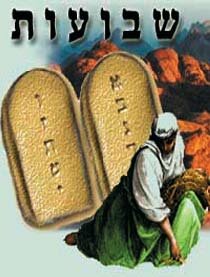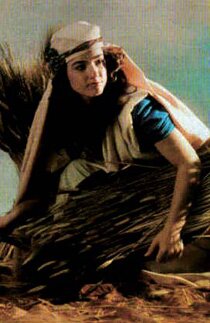| Shavuot: a basic primer |

|

|
|
Shavuot is also known as the Festival of Weeks, the Festival of First Fruits, The Festival of the Harvest and the Festival of the Giving of the Torah, yet this is a holiday without a set date, measured only by a count from the second day of Pesach, and a holiday with few Jewish laws to govern its practice. The counting of the Omer, for 49 days beginning on the second day of Pesach, reminds us of the link between the two holidays, one marking freedom from the bondage of slavery and the other freedom from a spiritual bondage.
A number of rich rituals and traditions surround the observance of the holiday, many reflecting the diversity of Judaism in terms of nationality, practice, traditional foods and liturgy. A central custom is the eating of dairy dishes. Most Jews follow the practice of eating a main meal of dairy on the fi rst day, but a meat meal the second. There are a number of reasons cited for this central practice. The Song of Songs, recited in Shavuot, uses milk and honey to describe the Land of Israel and as a representation of the Torah. Many tie it in with Exodus 23:19 that states that one must not eat a kid in its mother's milk. Eating milk on day one and meat on day two is a symbolic representation of this basic law of kashrut. Other reasons include that eating a dairy meal will force us not to focus on the Golden Calf and the use of gematria to conclude that chalav (milk) corresponds with the number forty, the number of days Moshe spent of Mount Sinai. Additionally, there is the explanation that once the Jewish people were given the Torah, they first became aware of the dietary laws. As there was no kosher meat available, the Jews ate a dairy meal while preparing later meals in accordance to the new laws. People customarily eat blintzes, kreplach, rugalah, and yes, cheesecake. Other food-based rituals include the preparation of two loaves of challah, specially shaped. The two loaves are representative of the two loaf temple offering that was required to be made on Shavuot as well as the two meals, meat and dairy. The shape of the challah varies widely depending on origin but not matter the shape, concentric, rungs or ladders, the two loaves create the perfect contrast and reminder of Pesach when we are forbidden from eating leavened bread.
Other distinctive practices include the recition of the Book of Ruth, one of the fi ve scrolls or Megillot. On a practical level, Ruth is read because the story connects Shavuot to its agricultural roots. On a deeper level, the acceptance of Ruth of the laws of the Jewish people is refl ective of the acceptance of the Jewish people of the Torah. Both Hallel, the Psalms of Praise, is recited and Yizkor, the memorial service, is observed on the second day of the holiday. There are two Torah scrolls read on each day as well as the inclusion of two medieval poems and the Song of Songs. As far as other public observances, there is the custom of planting new fl owers around the synagogue just prior to the holiday as a reminder of the harvest and the festival's agricultural roots. There is also a tradition of staying up for all or night to study Jewish texts called Tikkun Leyl Shavuot. There is a set liturgy for this study and it is often followed by an early morning service. Shavuot is a time of great happiness as its core is the giving of the Torah. Once the law was received we were truly free from bondage and ready to accept the Covenant as a people. The generation of Jews with the mindset of slaves was no longer present, after the forty years in the desert, and the future as a people with a direct relationship with God was now realised. (Issue May 2009)
|



















